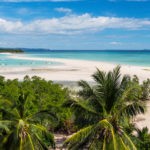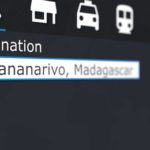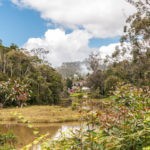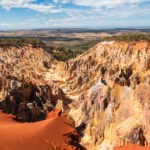The Marojejy National Park can rightly be described as one of the wildest and most demanding national parks in Madagascar. Today’s park area was designated as a protected area in the early 1950s. It was officially recognized as a national park, and since 2007, the Marojejy National Park has been a UNESCO World Heritage Site for its uniqueness worldwide. The almost 600 km² large park is located at an altitude of up to 2,100 meters. It is overgrown with dense rainforest. The literally untouched landscape offers a lot of variety with waterfalls, rivers, streams and mountainous landscapes with several hundred meters difference in elevation. At the same time, the physical fitness of the park visitor is required as soon as you enter the national park. The hiking and trekking trails are often slippery tracks, and its access depends on the weather. The vast majority of the trails are rough, steep, narrow and slippery.
Distributed over the park area are tall, centuries-old trees with more than four dozen palm species, a variety of different ferns and hundreds of epiphytes. Rare, but also endemic plants can be found here in the Marojejy National Park as well as the typical Malagasy orchids in all imaginable shades. The park visitor, who is interested in botany, enjoys its natural diversity. The up to 60 centimeters long Aye-Aye, in english finger animal or half-monkey is here, together with other Lemur species can be found here. it is not always easy to spot the aye-aye in the dark ferns in the dark. The silk sifaka of the genus Sifakas is a real rarity. Together with a dozen other lemur species, the long white fur animal lives exclusively in this park region. Because of its white appearance, the silk sifaka is often referred to as the angel of the forest. Visiting this national park is a very special experience for every tourist.
The infrastructure both in the park and outside is good. You can stay overnight in simple cabins, but better in your own tent. With simple sanitary facilities, cooking facilities and running water, the local camp equipment is more than economical. In the Park Office admission formalities are regulated and guides and possibly carriers for their own luggage booked.
The national park is located in the northeast of the country; About 60 kilometers east of Sambava, capital of the Sava region as the famous national vanilla and spice trading center.
Highlights
– Variety of palm trees and ferns
– Colorful orchids
– Aye-aye and silk sifaka
Equipment
– Hiking shoes or trekking shoes
– enough liquid
– Sunscreen
Tour Duration
Day Tour (2-4 hours)
Multi-day tour (4-5 days)





